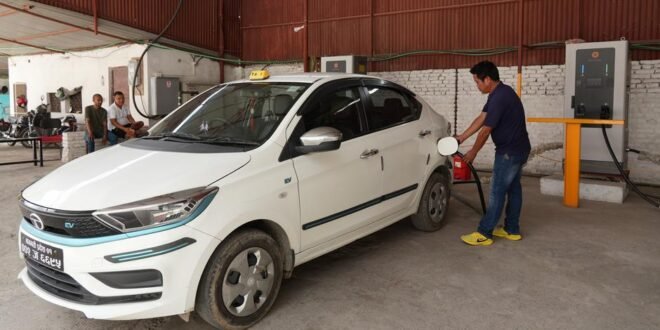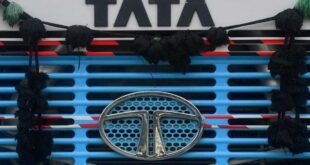The Rise of Electric Vehicles in Nepal
Nepal is witnessing a significant surge in the adoption of electric vehicles (EVs) as the country’s EV ecosystem expands and concerns over air pollution grow. This shift is not only transforming urban mobility but also playing a crucial role in addressing environmental challenges.
Sabin Kumar Chettri, a cab driver in Kathmandu, made the switch from a gasoline-powered car to an electric vehicle in 2024. For over a decade, he had relied on an internal combustion engine (ICE) vehicle, which came with high maintenance costs, hefty taxes, and the burden of rising fuel prices. His decision to transition to an EV has been part of a broader movement that is reshaping Nepal’s transportation landscape.
“EV technology is advancing globally, and I wanted to experience it firsthand,” Chettri shared. “I drive about 130 kilometers daily and earn around 11,000 Nepali rupees. Charging costs me just 500 rupees. Today, finding a charging station isn’t a problem because they are available every 50 to 100 kilometers. Plus, EV companies offer free servicing up to 160,000 kilometers, which saves a lot of money.”
Ambitious EV Adoption Targets
The growth in EV adoption in Nepal has been remarkable. From just 250 EVs in 2020, the number has surged to over 13,000 by 2024. More than 70% of newly imported four-wheeler private vehicles are now electric, driven by favorable policies and increasing public interest.
This shift is part of a national strategy aimed at reducing carbon emissions and modernizing urban mobility. Suresh Shrestha, a senior divisional engineer at Nepal’s Ministry of Physical Infrastructure and Transport (MoPIT), noted that consumers are increasingly willing to adopt EVs due to lower taxation compared to ICE vehicles. He also emphasized that EVs now offer similar range and features as traditional vehicles.
The government has set ambitious targets for the future. It aims for 90% of new private and 60% of new public four-wheeler vehicles sold from 2030 onward to be electric. This goal positions Nepal among the boldest in the region. To achieve these targets, the government is reducing tariffs, investing in infrastructure, and leveraging Nepal’s clean and reliable hydropower resources.
Kathmandu: A City Struggling with Pollution
Kathmandu, one of the most polluted cities in the world, faces severe air quality issues. The city’s air is estimated to be 20 to 35 times more polluted than the World Health Organization’s recommended PM2.5 levels. Major contributors include emissions from around 1.75 million vehicles, seasonal forest fires, smoke from brick kilns, construction dust, and open waste burning.
Air pollution affects not only the capital but also many regions across Nepal. According to the World Bank, air pollution causes approximately 26,000 deaths annually in the country, making it a critical public health issue. In this context, EVs are becoming a vital solution to reduce pollution and improve air quality.
“EVs are pollution-free and quiet. Customers today are more environmentally conscious and also want to save on fuel and maintenance costs,” said Suman Maharjan, an EV dealer in Kathmandu. He added that his business has already sold 125 units, with 250 more booked within just six months.
Challenges and Opportunities for Wider EV Adoption
Despite the progress, Nepal is still relatively new to EV technology, relying heavily on imports from neighboring countries like China and India. The government acknowledges the challenges, including import standards and the lack of skilled technicians. However, it is working closely with international partners to address these issues.
The World Bank is currently studying the feasibility of converting ICE vehicles into EVs. International organizations such as the Mitigation Action Facility, Deutsche Gesellschaft für Internationale Zusammenarbeit (GIZ), and the Global Green Growth Institute (GGGI) are assisting in training EV technicians and expanding access to EV financing through banks.
Shrestha highlighted the potential of Nepal’s hydropower resources to support large-scale EV adoption. “Nepal is ahead in EV adoption and taking proactive steps to cut carbon emissions. Fossil fuels will eventually run out, but with abundant clean hydropower, Nepal is in a perfect position to drive the shift to sustainable transport.”
 Info Malang Raya Its All About World News
Info Malang Raya Its All About World News



